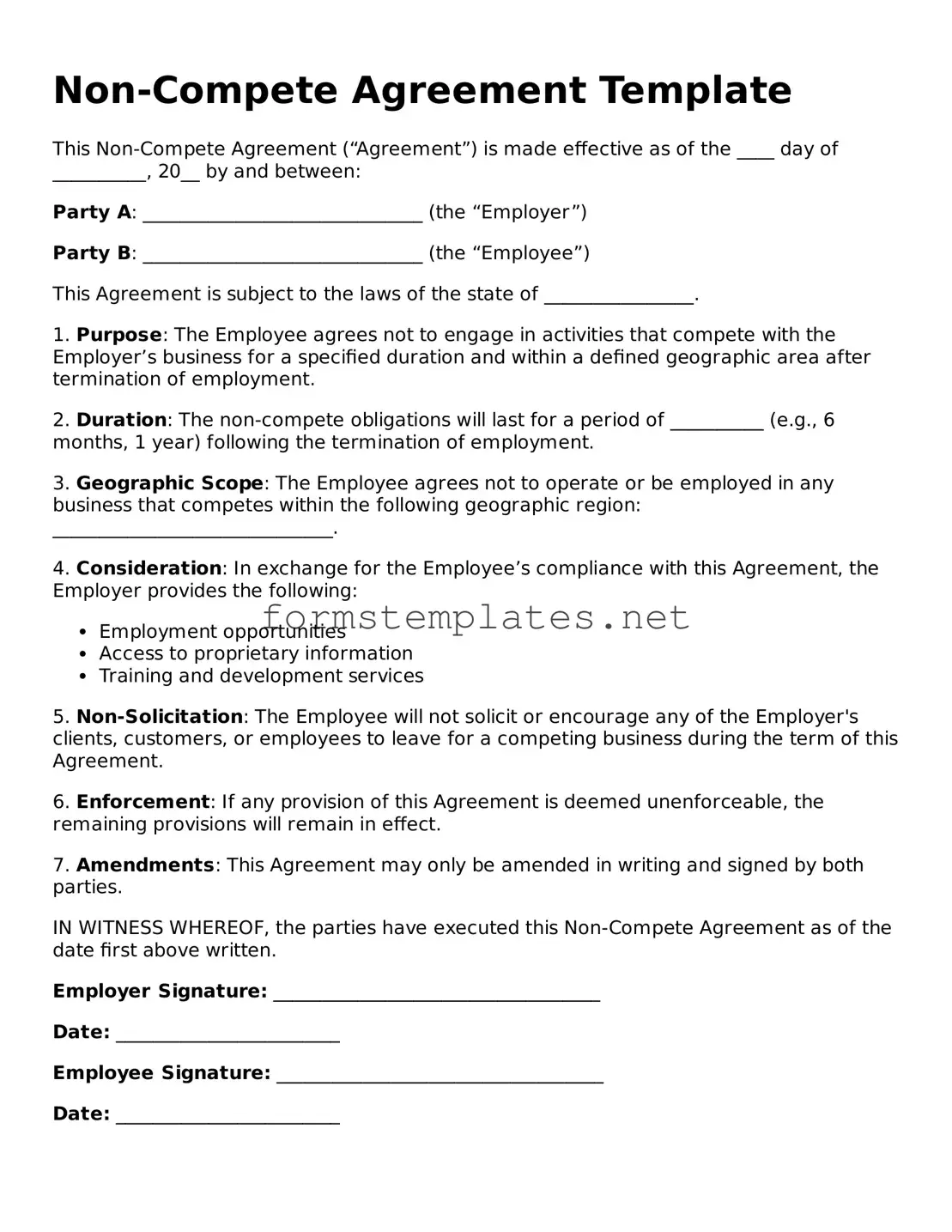Non-Compete Agreement Template
This Non-Compete Agreement (“Agreement”) is made effective as of the ____ day of __________, 20__ by and between:
Party A: ______________________________ (the “Employer”)
Party B: ______________________________ (the “Employee”)
This Agreement is subject to the laws of the state of ________________.
1. Purpose: The Employee agrees not to engage in activities that compete with the Employer’s business for a specified duration and within a defined geographic area after termination of employment.
2. Duration: The non-compete obligations will last for a period of __________ (e.g., 6 months, 1 year) following the termination of employment.
3. Geographic Scope: The Employee agrees not to operate or be employed in any business that competes within the following geographic region: ______________________________.
4. Consideration: In exchange for the Employee’s compliance with this Agreement, the Employer provides the following:
- Employment opportunities
- Access to proprietary information
- Training and development services
5. Non-Solicitation: The Employee will not solicit or encourage any of the Employer's clients, customers, or employees to leave for a competing business during the term of this Agreement.
6. Enforcement: If any provision of this Agreement is deemed unenforceable, the remaining provisions will remain in effect.
7. Amendments: This Agreement may only be amended in writing and signed by both parties.
IN WITNESS WHEREOF, the parties have executed this Non-Compete Agreement as of the date first above written.
Employer Signature: ___________________________________
Date: ________________________
Employee Signature: ___________________________________
Date: ________________________
